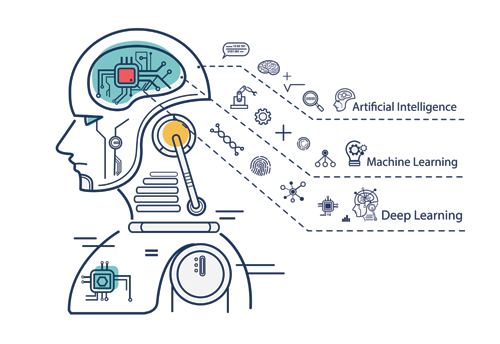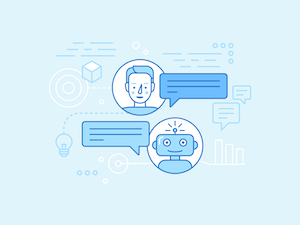New Year New Trends: AI in 2019
In this advancing world of artificial intelligence, it continues to find new ways to impress us. Making our daily lives both easier and more intricate, companies and businesses are developing new gadgets and innovations to make it happen. We see changes in just about every area of our day-to-day lives including, the home, the workplace, and transportation. As the field of AI continues to make advancements in these areas, businesses and individuals must make the effort to leverage these innovations. This fast-paced movement in AI constantly changes our work roles, the way we drive, the way we learn and even the laws that govern our society. Here are a few trends we can expect to see in 2019.
AI in the Workplace
It is no question that AI has a presence in our workplace. Today, many employees worry about the automation of jobs and losing those jobs to so-called “robots”. While automation has become prevalent in many areas of work, human employees are still needed to fully carry out and accomplish an organization’s goals. Also, increased collaboration with human-machine relations is critical to this achievement of goals. As new advancements in technology work their way into work-related tasks, employees will experience more training to enhance their abilities in working with AI applications. This training may even be given with the use of AI itself! Through AR (Augmented Reality), and VR (Virtual Reality), employees will be taught how to properly collaborate with AI in order to carry out strategic objectives more effectively.

One particular area that has changed rapidly due to advancements in AI is healthcare. The professional role of doctors and other healthcare professionals will only experience more changes in their industry as time goes on. Currently, these professionals are experiencing changes in processing information considering the information involved in the industry is doubling every 3-4 years. In 2019, healthcare workers can expect to see changes in the way data is processed due to machine learning based systems’ ability to analyze massive amounts of data. In addition, healthcare students can expect to see changes in the way they are taught, learning how to use decision support systems (DSS) to allocate prescriptions instead of manual allocation. Moreover, these changes in the healthcare industry allow professionals to focus more on irreplaceable functions such as clinical assessment and patient education and less on automatable tasks.
AI and Transportation
When we think of AI and transportation, Elon Musk and Tesla’s auto-pilot cars often come to mind. In 2019, we can expect to see several vehicles with these and other connected driver aids. Car manufacturers such as Audi, Jaguar, Volvo, and Acura are expected to release vehicles with several components of AI built in. These driver aids include autonomous lane changes, assisted steering, pedestrian detection, etc.
These vehicles will be primarily released in Europe as many laws for distracted driving prevent many driver aids from being implemented in North America. While these driver aids allow drivers to take their eyes off the wheel to answer a text message or phone call, the law does not change to accommodate these new advancements. We can expect to see several changes in laws surrounding autonomous driving and other areas in AI within 2019.
AI in the Home
Increased usage of personal assistants such as Amazon Alexa and Google Home, has led them to become common elements in every home. Users talk to these devices to play music, find out what the weather is, or follow along to a recipe. As these personal assistants become increasingly common in people’s homes, we will start to see much advancement with these devices. As we have seen already, these personal voice assistants have come a long way in terms of improved technology. They can recognize dialects and even context in a user’s language. What we can expect in 2019, is a further improvement in natural language processing (NLP) and support for additional layers of context, which evokes more communication between the device and user to provide a more detailed search result.

In addition to personal voice assistants, we may start to talk to other devices in the home. Objects such as TVs, fridges, and even lamps could start to be programmed with communicative technology to listen to user’s prompts. If you’re creating a grocery list and want to know if you need eggs just say “do I have enough eggs to make omelettes tomorrow?”, your fridge could respond with the correct answer. We can expect to see more of this conversational AI in the home come 2019.
This immensely progressive and innovative field of technology that is artificial intelligence is changing so many areas of our lives by the minute. Day-by-day we see continuous changes and advancements that affect the way we work, drive and play. When we look back over the years we can see major innovated changes in artificial intelligence that may have occurred faster than anticipated. This expeditious evolution of artificial intelligence will continue to be prevalent as we enter 2019.
